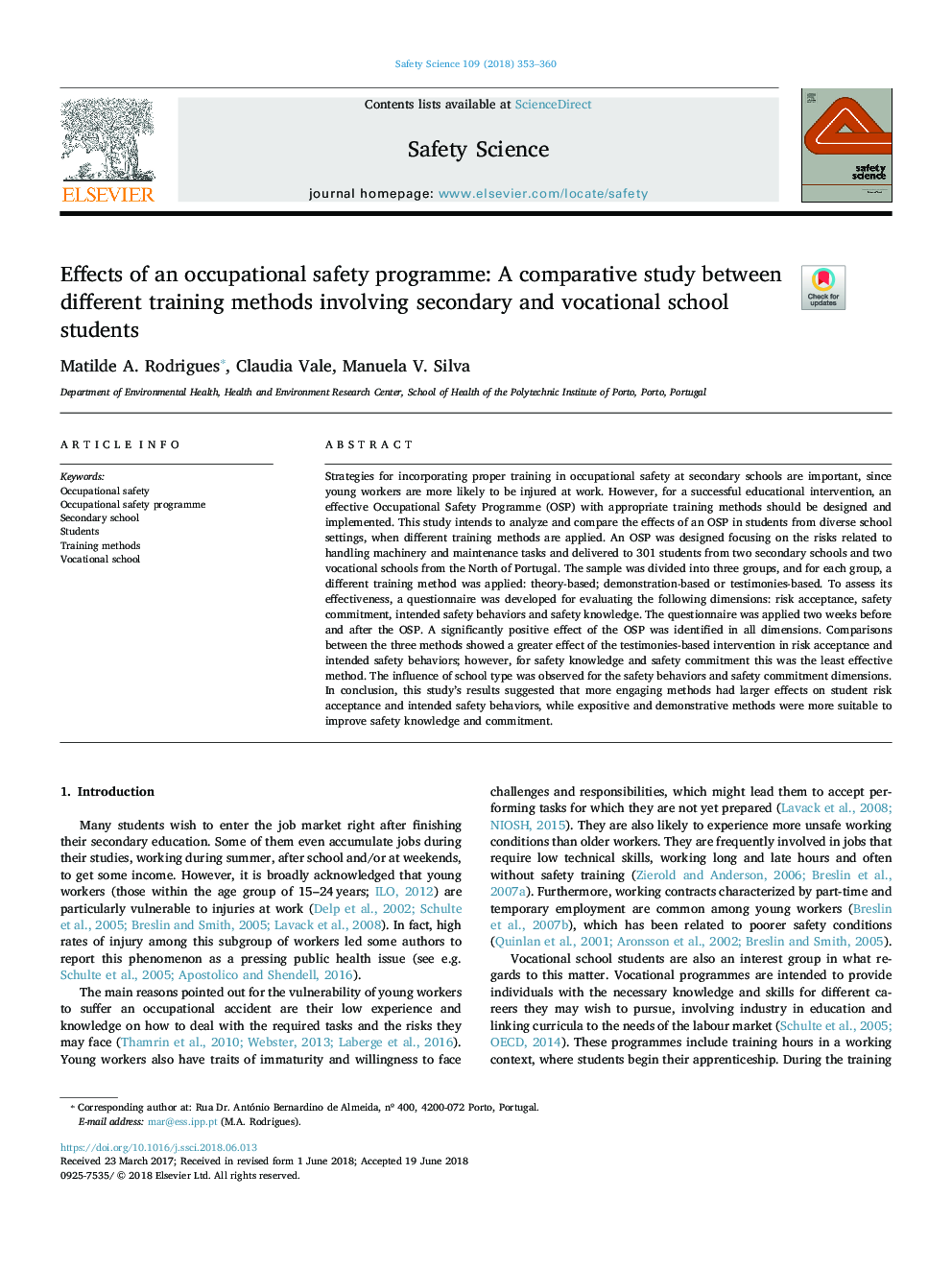| Article ID | Journal | Published Year | Pages | File Type |
|---|---|---|---|---|
| 6974733 | Safety Science | 2018 | 8 Pages |
Abstract
Strategies for incorporating proper training in occupational safety at secondary schools are important, since young workers are more likely to be injured at work. However, for a successful educational intervention, an effective Occupational Safety Programme (OSP) with appropriate training methods should be designed and implemented. This study intends to analyze and compare the effects of an OSP in students from diverse school settings, when different training methods are applied. An OSP was designed focusing on the risks related to handling machinery and maintenance tasks and delivered to 301 students from two secondary schools and two vocational schools from the North of Portugal. The sample was divided into three groups, and for each group, a different training method was applied: theory-based; demonstration-based or testimonies-based. To assess its effectiveness, a questionnaire was developed for evaluating the following dimensions: risk acceptance, safety commitment, intended safety behaviors and safety knowledge. The questionnaire was applied two weeks before and after the OSP. A significantly positive effect of the OSP was identified in all dimensions. Comparisons between the three methods showed a greater effect of the testimonies-based intervention in risk acceptance and intended safety behaviors; however, for safety knowledge and safety commitment this was the least effective method. The influence of school type was observed for the safety behaviors and safety commitment dimensions. In conclusion, this study's results suggested that more engaging methods had larger effects on student risk acceptance and intended safety behaviors, while expositive and demonstrative methods were more suitable to improve safety knowledge and commitment.
Related Topics
Physical Sciences and Engineering
Chemical Engineering
Chemical Health and Safety
Authors
Matilde A. Rodrigues, Claudia Vale, Manuela V. Silva,
